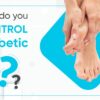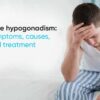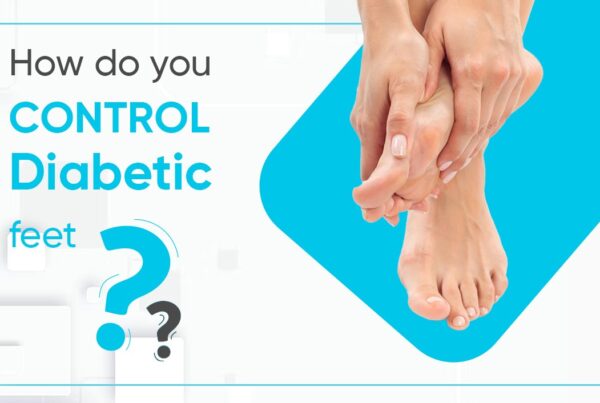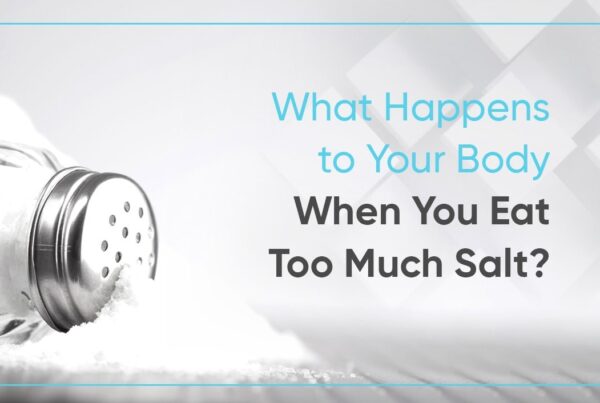Varicose Veins – Symptoms, Diagnosis, and Causes
How are varicose veins caused?
When your veins become swollen, dilated, and clogged with blood, varicose veins are formed. Varicose veins are typically raised and enlarged, with a red or bluish-purple hue. They are sometimes painful.
It’s a very common ailment, particularly in women. Varicose veins affect about a fifth of all adult people, and they most often affect the lower legs. It is because standing or walking puts more pressure on the leg veins. Varicose veins also known as spider veins are mainly a cosmetic problem for many people. Varicose veins, on the other hand, can cause pain and discomfort. For medical purposes, varicose veins may not necessarily need medication.
Varicose vein types
Varicose veins are classified into two groups. There are varicose veins, which could be uncomfortable or not be. Spider veins, on the other hand, are a possibility. Spider veins are thinner than varicose veins and have a purple or blue hue to them. They typically affect the legs, and they can also affect the face.
What are the signs of varicose veins?
There is generally no discomfort or ache associated with varicose veins. Varicose veins are characterized by distorted, enlarged, or larger veins that turn blue, purple, or dark purple in color. Varicose veins, on the other hand, can cause several other symptoms.
Sore Ankles
1.Legs tend to be heavier. It’s more likely to happen after a workout or at nighttime.
2.Spider veins appear in the affected region.
3.The afflicted area’s skin becomes oily, itchy, or red.
4.Restless leg syndrome affects a variety of people who have varicose veins. Veins can bleed profusely and ulcers may form in serious cases.
5.A discomfort or ache in the legs or other areas affected by varicose veins.
If you’re having pain in the area affected, it may be like
1.Itching in the area of your infected veins.
2.You have a strong sensation in your legs.
3.you’ll feel more discomfort when you stand or sit for a long time.
4.Discoloration of the skin around the impaired veins.
When to see a doctor?
You may use a variety of at-home remedies to help avoid varicose veins from deteriorating or help relieve the pain. If the self-care methods don’t seem to be working or you are concerned about your varicose veins, you must consult a doctor for a diagnosis.
Injured or poor valves could cause varicose veins. The blood in the veins returns from the body to your heart. In your veins, there are tiny valves that open as blood rushes into your heart and close when blood flows in a reverse way.
This ensures the blood continues to circulate in the right direction. These valves in your veins, though, may become weakened or sluggish over time. Blood will accumulate in the veins if these valves don’t work properly.
What conditions put you at risk for varicose veins?
Varicose veins in the legs or other areas of the body may be caused by a variety of causes, including:
Observe your stance: Extended periods of standing or sitting in one position would raise the risk of varicose veins. Because of your stance, your blood circulation will be limited.
Age a factor: Varicose veins are even more common as people get older. It is because the valves in your veins deteriorate with age. It will be more challenging for your veins to maintain adequate blood flow as you get older.
Women have greater chances of developing Varicose veins: Owing to hormonal imbalances triggered by conception, pre-menstruation, and menopause women are more likely than men to develop varicose veins. Hormone medication, such as contraceptive pills, has been related to an increased risk of varicose veins.
Overweight: Obesity is a disorder in which a person is overweight. Overweight individuals are more likely to have varicose veins because their veins are under more strain.
Family Background: If you already have relatives that have varicose veins, you are more likely to develop them as well.
What is the protocol for treating varicose veins?
Varicose veins can be treated with a variety of methods. Home care and surgical procedures are also choices for treatment.
Personal care: Varicose veins can be treated at home and kept from becoming worse. You can begin by exercising regularly. If you’re overweight, shedding weight will assist in the treatment of your disease. Standing or sitting in one position for long periods of time is not recommended. It will aid in the proper distribution of blood across your body. Wear loose clothing that does not block the flow of blood. Finally, if you have varicose veins in the legs, you can spend a bit of time with your legs raised.
Compression stockings: Before attempting any other therapies, sporting compression stockings all day is the simple first step. Compression stockings add constant pressure to your thighs, allowing veins and leg muscles to transfer blood more efficiently. The level of compression varies depending on the product and form of fabric. They’re available at most pharmacy stores.
Large vein foam sclerotherapy: Injecting a foam solution into a large vein could also be a treatment option for closing and sealing a vein.
Ambulatory phlebectomy: In this operation, the doctor removes the small varicose veins by a series of small skin cuts. Only the pricked areas of the leg are dulled during the outpatient operation. Scarring is usually minimal.
Laser therapy: Doctors are now using laser therapies to seal off spider veins and small varicose veins, thanks to modern technologies. Powerful flashes of light are directed at the vein during laser treatment. No sutures or needles are used.
Endoscopic vein surgery: Endoscopic vein surgery is a type of vein surgery that is performed under a microscope. If other approaches fail, you will need endoscopic vein surgery, but only if you have severe leg ulcers. Your doctor can use a thin video camera injected into your leg to screen for varicose veins, close them, and then extract them through minor incisions. This operation is also done as an outpatient procedure.
How can varicose veins be avoided?
There are a variety of measures you could do to avoid varicose veins from forming or spreading. It primarily entails improving blood circulation.
1.Shed pounds
2.Follow a low-salt and high-fiber diet
3.Stop wearing clothing that is too tight.
4.Exercise
5.Lift your legs for some lengths of time
6.Change your sitting or standing posture regularly to avoid varicose veins.









